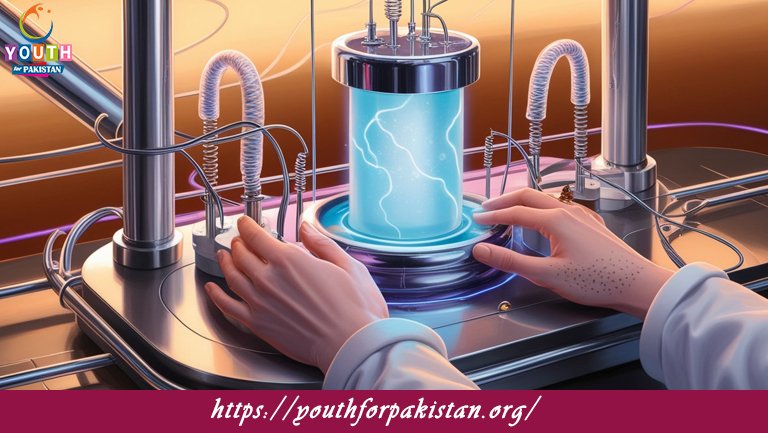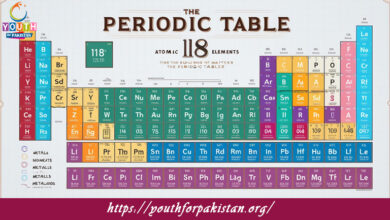Electrochemistry MDCAT MCQs with Answers

Welcome to the Electrochemistry MDCAT MCQs with Answers. In this post, we have shared Electrochemistry Multiple Choice Questions and Answers for PMC MDCAT 2024. Each question in MDCAT Chemistry offers a chance to enhance your knowledge regarding Electrochemistry MCQs in this MDCAT Online Test.
In an electrochemical cell, the anode is where:
a) Reduction occurs
b) Oxidation occurs
c) No reaction occurs
d) Both oxidation and reduction occur
The standard electrode potential of a half-cell is measured under:
a) Standard temperature and pressure (STP)
b) Standard conditions
c) Room temperature
d) Atmospheric pressure
The cell potential of an electrochemical cell can be calculated by:
a) Subtracting the standard reduction potentials
b) Adding the standard reduction potentials
c) Multiplying the standard reduction potentials
d) Dividing the standard reduction potentials
In a galvanic cell, the electrode where oxidation takes place is called the:
a) Cathode
b) Anode
c) Salt bridge
d) Electrolyte
The salt bridge in an electrochemical cell:
a) Facilitates the flow of electrons
b) Prevents the mixing of different solutions
c) Maintains electrical neutrality
d) Provides a source of electricity
The Nernst equation is used to calculate:
a) The cell potential at non-standard conditions
b) The concentration of solutions
c) The amount of reactants used
d) The rate of reaction
In the electrolysis of water, the gas evolved at the anode is:
a) Hydrogen
b) Oxygen
c) Chlorine
d) Nitrogen
The term “electrolytic cell” refers to:
a) A cell that generates electricity from chemical reactions
b) A cell that uses electricity to drive chemical reactions
c) A cell that stores electrical energy
d) A cell that measures electrode potentials
In a Daniell cell, the anode reaction is:
a) Zn → Zn²⁺ + 2e⁻
b) Cu²⁺ + 2e⁻ → Cu
c) 2H₂O → O₂ + 4H⁺ + 4e⁻
d) Cl₂ + 2e⁻ → 2Cl⁻
The standard electrode potential of the hydrogen electrode is defined as:
a) 0.00 V
b) 1.00 V
c) 2.00 V
d) -0.76 V
In the electroplating process, the metal to be plated is deposited at the:
a) Anode
b) Cathode
c) Salt bridge
d) Electrolyte
The cell potential of a galvanic cell is:
a) Always positive
b) Always negative
c) Zero
d) Can be positive or negative
In a concentration cell, the cell potential arises due to:
a) Differences in electrode materials
b) Differences in electrode potentials
c) Differences in ion concentrations
d) Differences in temperature
The Faraday constant is used to relate:
a) The amount of substance to the charge
b) The temperature to the cell potential
c) The pressure to the concentration
d) The volume to the current
In a voltaic cell, the electrode where reduction occurs is called the:
a) Anode
b) Cathode
c) Salt bridge
d) Electrolyte
The standard cell potential is measured under:
a) 1 M concentration and 298 K
b) 1 bar pressure and 298 K
c) 1 M concentration and 273 K
d) 1 atm pressure and 273 K
The discharge potential of an ion is:
a) The potential at which the ion is oxidized
b) The potential at which the ion is reduced
c) The potential at which the ion is neutralized
d) The potential at which the ion is precipitated
In the electrolysis of copper(II) sulfate solution, the gas evolved at the anode is:
a) Hydrogen
b) Oxygen
c) Chlorine
d) Sulfur dioxide
The process where electric current drives a non-spontaneous chemical reaction is known as:
a) Electrolysis
b) Voltaic cell operation
c) Galvanization
d) Electroporation
In a galvanic cell, the electrolyte solution:
a) Conducts electricity
b) Prevents electrode reactions
c) Is a non-conductive medium
d) Acts as a catalyst
The term “electrochemical series” refers to:
a) A list of elements arranged by their atomic numbers
b) A list of elements arranged by their electrochemical potentials
c) A list of compounds arranged by their solubility
d) A list of reactions arranged by their rates
In an electrolytic cell, the direction of current flow is:
a) From the anode to the cathode externally
b) From the cathode to the anode externally
c) From the anode to the cathode internally
d) From the cathode to the anode internally
The electrode potential of a half-cell is always measured relative to:
a) Another half-cell
b) The salt bridge
c) The external circuit
d) The electrolyte
In a Daniel cell, the cathode is:
a) Zinc
b) Copper
c) Silver
d) Lead
The standard electrode potential of the copper(II) ion electrode is:
a) +0.34 V
b) +0.76 V
c) -0.34 V
d) -0.76 V
The reduction potential of an electrode measures its:
a) Ability to gain electrons
b) Ability to lose electrons
c) Conductivity
d) Capacity to dissolve in water
In a concentration cell, the concentration difference affects:
a) The current but not the potential
b) The potential but not the current
c) Both the potential and the current
d) Neither the potential nor the current
The half-life of an electrolytic process is affected by:
a) The electrode surface area
b) The temperature of the solution
c) The concentration of the electrolyte
d) All of the above
The Faraday’s first law of electrolysis states that:
a) The amount of substance deposited is proportional to the charge passed
b) The voltage is proportional to the current
c) The energy required is proportional to the time
d) The rate of reaction is proportional to the temperature
The electrode potential of a cell increases with:
a) Increasing temperature
b) Decreasing ion concentration
c) Increasing ion concentration
d) Increasing pressure
In the electrolysis of brine, the product formed at the anode is:
a) Sodium hydroxide
b) Hydrogen gas
c) Chlorine gas
d) Sodium chloride
The electromotive force (EMF) of a cell is:
a) The difference in electrode potentials
b) The sum of the electrode potentials
c) The product of current and resistance
d) The rate of the chemical reaction
The standard electrode potential of the hydrogen electrode is used as a reference point of:
a) 1 V
b) 2 V
c) 0 V
d) -1 V
In an electrochemical cell, the electrolyte solution:
a) Is always acidic
b) Can be a salt solution
c) Should be non-conductive
d) Is used only in the anode compartment
The Nernst equation relates the electrode potential to:
a) Concentration and temperature
b) Temperature and pressure
c) Pressure and volume
d) Concentration and pressure
In the electrolysis of molten sodium chloride, the products are:
a) Sodium and chlorine gas
b) Sodium chloride and chlorine gas
c) Sodium hydroxide and chlorine gas
d) Sodium and sodium chloride
The efficiency of an electroplating process depends on:
a) The current density
b) The duration of plating
c) The concentration of the electrolyte
d) All of the above
The term “overpotential” refers to:
a) The extra voltage needed beyond the theoretical value
b) The theoretical voltage of a cell
c) The voltage drop in the cell
d) The efficiency of the cell
The process of converting electrical energy into chemical energy is known as:
a) Electrolysis
b) Electroplating
c) Electrodialysis
d) Galvanization
The role of a reference electrode in electrochemical measurements is to:
a) Provide a stable and known electrode potential
b) Increase the cell’s electrical conductivity
c) Decrease the rate of reaction
d) Change the concentration of ions
If you are interested to enhance your knowledge regarding Physics, Chemistry, Computer, and Biology please click on the link of each category, you will be redirected to dedicated website for each category.





